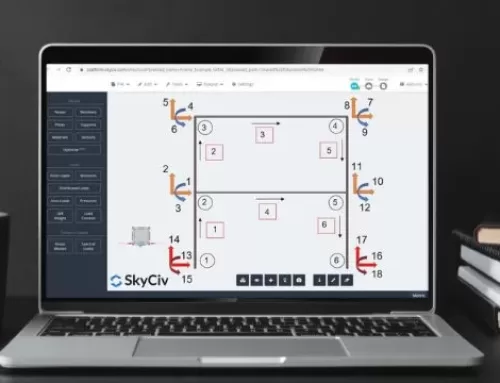While there are different definitions of what an “engineer” is, the ethical responsibility for engineers’ buy-in-large remains the same. Depending on the country or region you are in, the terminology and path to become a certified professional engineer can differ based on a variety of factors.
Let’s take a look at some prominent regions of the world, their designations for professional engineers, as well as the requirements to become one and any governing organizations.
United States
In the United States, there are two major certifications that make up the civil/structural engineering landscape. In terms of Structural Engineering, the more rigorous licensure is the Structural Engineer (SE) license. The Professional Engineer (PE) license still allows engineers to practice, it is less focused specifically on structural engineering principles. Each of the 50 states has engineering boards that administer these tests since professional licensure in one state does not validify your ability to practice in another. In general, engineers with the SE certification are assumed to have a deeper knowledge of building and bridge design, specifically in areas with high seismicity and wind loading.
The governing body for professional engineering licensure is the National Council of Examiners for Engineering and Surveying (NCEES). With licensure in one state, engineers can apply to have it count in additional states. It is up to the state’s individual engineering board if there are any further actions required. Because there are a variety of structural demands across the United States, this can lead to the requirement of submission of references or taking another exam.
Professional Engineer (PE) License
Per NCEES, the requirements to become a PE include:
-
- Graduate from an Accreditation Board for Engineering and Technology (ABET)-accredited four-year college or university program with a degree in engineering (e.g., Bachelor of Engineering, Bachelor of Science in Engineering, Master of Science in Engineering, Master of Engineering) or in some states, graduate from an ABET-accredited four-year college or university program with a degree in engineering technology.
- Complete a standard Fundamentals of Engineering (FE) written examination, which tests applicants on the breadth of understanding of basic engineering principles and, optionally, some elements of an engineering specialty. Completion of the first two steps typically qualifies applicants for certification in the United States as an engineer in training (EIT), sometimes also called an engineer intern (EI).
- Accumulate a certain amount of engineering experience: in most states, the requirement is four years, but it is lower in some. For engineering technology graduates, the required number of years may be higher.
- Complete a written Principles and Practice in Engineering (PE) examination, which tests the applicant’s knowledge and skills in their chosen engineering discipline (civil, electrical, industrial, mechanical, etc.), as well as engineering ethics.
Structural Engineer (SE) License
The requirements to become a SE differ with every state, but they mimic the requirements for the PE, including the requirement of the ABET degree, completion of the FE exam, and a considerable accumulation of experience. Some states require more experience or have a more stringent definition of what “experience” means.
The difference in certification does come down to the difference in exam material as well. The SE exam is a 16-hour exam focused entirely on the aspects and principles of structural engineering, given over two days: one 8-hour exam strictly for vertical forces and one 8-hour exam strictly for lateral forces. This differs from the single, 8-hour exam for the PE exam, which covers additional topics within the civil engineering umbrella.
Canada
To practice in a province or territory in Canada, engineers must obtain a license from the specific regulatory body within that province or territory. In this case, each province has its own regulatory engineering body. The title of this license is most commonly referred to as the Professional Engineer License with the abbreviation stylized as “P.Eng”. Because there are multiple governing bodies, Engineers Canada is an organization that aims to support the different bodies in communicating requirements, etc., to engineers.
Similar to the United States in terms of mobility of licensure between provinces, if engineers hold a license in one province, they can apply to honor their license in another province, but they may be required to submit additional information via a resume or references.
Professional Engineer (P.Eng) License
In general, there are five criteria that must be satisfied, per Engineers Canada:
-
- Academics: Hold an engineering degree from a Canadian Engineering Accreditation Board-accredited undergraduate program or possess equivalent qualifications.
- Work experience: Fulfill the engineering work experience requirement in the province or territory where you are applying for a license.
- Professionalism and ethics: Pass the Professional Practice Examination (PPE), which tests your knowledge of the laws that affect the engineering profession, the professional standards to which you will be held accountable, and ethical standards, and other topics such as patents, trademarks, and copyrights.
- Good character: Applicants must demonstrate good character.
- Language: Applicants must demonstrate an ability to work in either English or French, depending on the province or territory in which they apply for licensure.
United Kingdom:
Over 222,000 engineers exist in the United Kingdom with the accreditation titles of Engineering Technician, Incorporated Engineer, Information and Communications Technology Technician, and Chartered Engineer (CEng), with the latter being the most representative of a “Professional Engineer”. The organization that provides guidance for licensure is the Engineering Council.
Chartered Engineers “develop solutions to engineering problems using new or existing technologies, through innovation, creativity and change and/or they may have technical accountability for complex systems with significant levels of risk.” [XXX].
Chartered Engineer (CEng)
To obtain this certification, engineers must first present adequate professional competencies, which is defined by the Engineering Council’s UK Standard for Professional Engineering Competence (UK-SPEC), which covers 5 different areas.
Per the Engineering Council, applicants must have the following to be eligible:
-
- A Bachelors degree, with Honours, in engineering or technology, accredited for CEng, plus an appropriate and accredited Masters degree or Engineering Doctorate (EngD), or appropriate further learning to Masters level
OR
-
- An accredited integrated MEng degree
Australia:
In Australia, there different grades of membership as defined by the governing body, Engineers Australia (EA), ranging from “Student” to “Chartered Status”. Upon graduation from an EA accredited tertiary university in engineering, newer engineers can be considered the “Graduate” grade. The grade of membership closely aligned with Professional engineering licensure around the world would be the “Member” grade.
Members are constituted in three different occupational categories: Professional Engineer, Engineering Technologist, and Engineering Associate. The educational requirements for each category of Member are as follows:
- Professional Engineers: at least the equivalent of a four-year, bachelor’s degree in engineering.
- Engineering Technologist: at least the equivalent of a three-year, bachelor’s degree in engineering.
- Engineering Associate: at least the equivalent of a two-year, associate degree or a diploma or advanced diploma in engineering
Engineers Australia Member
For this grade, Engineers Australia requires the above educational degree completion, as well as 3 years of postgraduate experience in the engineering industry.
Europe:
In Europe, there are a variety of countries that adhere to a single set of design standards known as Eurocode. Similarly, for engineering certification, the European Engineer (EUR ING) title is set for those who work in these countries. The governing body is known as FEANI, which is a “federation of professional engineers that unites national engineering associations from 33…countries”
As a certified EUR ING, you would be included in the FEANI register, which is a database containing 33,700 engineers currently.
European Engineer (EUR ING)
According to FEANI, the criteria for the EUR ING title requires the following:
After a secondary education at a high level validated by one or more official certificates, normally awarded at the age of about 18 years, a minimum total period of seven years’ formation – education, training, and experience -is required by FEANI for the EUR ING title. This formation consists of:
-
-
Minimum three years of engineering education successfully completed by an official degree, in a discipline/program and given by a university (U) or other recognized body at the university level, recognized by FEANI.
-
Minimum two years of valid professional experience (E).
-
In case the education and experience together are less than the minimum seven years’ formation required, the balance to seven years should be covered by education (U), experience (E), or training (T) monitored by the approved engineering institutions, or by preliminary engineering professional experience.
-
We hope this gave you some insight into your engineering colleagues around the world! Make sure to check out our other articles for more interesting content.
References:
- “Chartered Engineer (CEng).” Engineering Council, www.engc.org.uk/professional-registration/the-professional-titles/chartered-engineer/.
- “Membership.” Member Membership Benefits | Engineers Australia | Engineers Australia, www.engineersaustralia.org.au/Membership/Membership-Benefits/Member-Membership-Benefits/
- “NCEES PE Structural Exam Information.” NCEES, 25 Jan. 2021, ncees.org/engineering/pe-structural/.
- “Overview of the Licensing Process.” Engineers Canada, engineerscanada.ca/become-an-engineer/overview-of-licensing-process/
- “What Is the EUR ING Title.” FEANI, www.feani.org/feani/eur-ing-title/what-eur-ing-title.
Structural Engineer
BEng (Civil)







